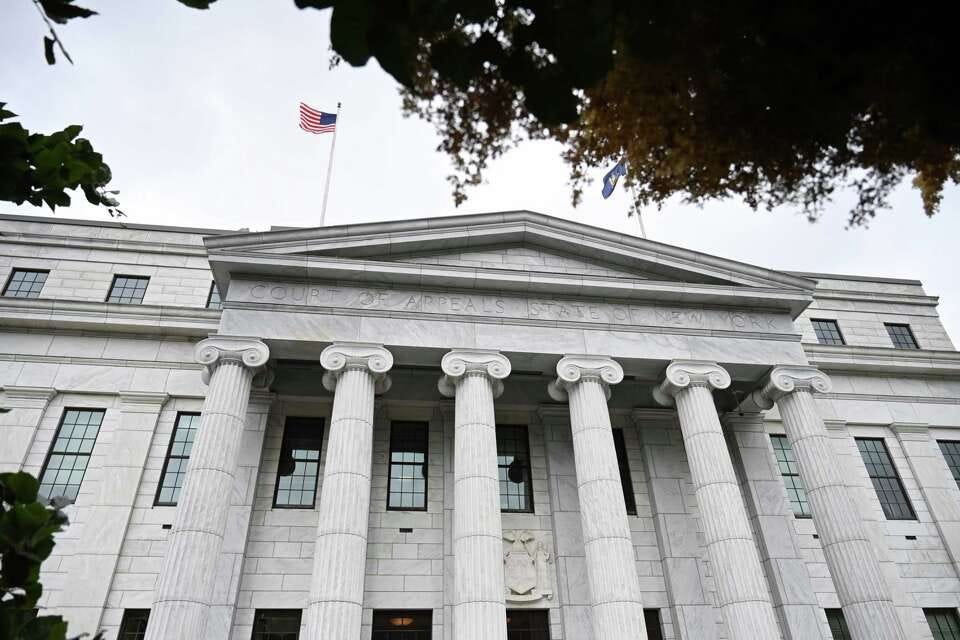New York law spurred by Buffalo mass shooting faces federal test
Plus: Where Hochul and Mamdani are aligned — and where they're not.
Good afternoon — It’s Tuesday and National Voter Registration Day.
In today’s CapCon:
A New York law enacted after a shooter, influenced by social media, killed 10 people in Buffalo in 2022 faces questions over its constitutionality.
Where Hochul says she agrees with Zohran Mamdani and where she does not.
Hochul has widened her lead over U.S. Rep. Elise Stefanik by double digits, per a new poll released Tuesday.
Chief Judge Rowan Wilson will preside over a hearing in Albany this week on access to civil justice.
Names in today’s CapCon: Eugene Volokh, Kathy Hochul, Eric Adams, Andrew Cuomo, Zohran Mamdani, Donald J. Trump, Rowan Wilson, Joseph Zayas, Elise Stefanik, Zellnor Myrie

⚖️ New York law passed after Buffalo shooting faces new constitutional test
There are times when federal appellate courts ask the Court of Appeals, New York’s highest court, to answer a question about one of the state’s laws.
The Court of Appeals then hears arguments from the attorneys in the federal case around how that state law should be interpreted. The high court’s ruling is then used by the federal appellate court in its own decision.
The Court of Appeals accepted the certification of questions in three cases Tuesday, all of which could lead to significant decisions.
But the court’s answer to one of those questions will determine the constitutionality of a state law that requires social media companies to more actively monitor and respond to complaints of “hateful conduct.”
It was passed by the state Legislature less than a month after the mass shooting in Buffalo that killed 10 people at a Tops grocery store in Buffalo. The shooter, an 18-year-old, had driven hours to target a predominantly Black neighborhood.

🔎 What about the shooting gave the law momentum
The bill wasn’t new. It had been introduced more than a year earlier but hadn’t moved in either the state Assembly or Senate. That changed after the attack in Buffalo.
The investigation that followed revealed that the perpetrator’s racist views had been heavily influenced by social media.
“On online platforms, the Buffalo shooter found a community of hate that warped his worldview with racist conspiracy theories, pseudoscience, and a cult of worshipping past mass murderers,” a report on the shooting from the state attorney general’s office said.
The shooter wrote in his manifesto that he was particularly influenced by content on 4chan, a website where content posted by users isn’t heavily moderated. Hate speech and disinformation is common on the website.
That’s where the shooter said he learned about the false “Great Replacement Theory,” the idea that people of color are deliberately replacing white people through mass migration and changing birth rates.
Just nine days before the attack, he gave credit to a board on 4chan for exposing him to that and other white nationalist conspiracy theories.
“These experiences didn’t make me racist against blacks though, maybe uncomfortable around the majority of them, since I only relate them to trouble,” he wrote. “I only really turned racist when 4chan started giving me facts that they were intellectually and emotionally inferior.”
He used another online platform called Discord to plan his attack. He created his own Discord server and used it as a private diary leading up to the attack, allowing him to evade content moderation policies.
But on the day of the attack, he sent invitations to other users to access the server, allowing them to read everything he’d written and access a livestream of the shooting.
That livestream was hosted on Twitch, an online streaming platform. Most of the stream showed his drive to the store but the first two minutes of the shooting were broadcast before the platform ended the livestream.
He was inspired to livestream the attack after watching video streamed on Facebook of the mass shooting in Christchurch, New Zealand, in 2019.
“I think that live streaming this attack gives me some motivation in the way that I know that some people will be cheering for me,” the Buffalo shooter wrote.
📜 What the law says and what the Court of Appeals has to decide
The law has two provisions. The first requires social media companies to have a clear way for users to report “hateful conduct,” which is defined in the law. The second requires those companies to disclose how they address those reports.
Keep reading with a 7-day free trial
Subscribe to Capitol Confidential with Dan Clark to keep reading this post and get 7 days of free access to the full post archives.



